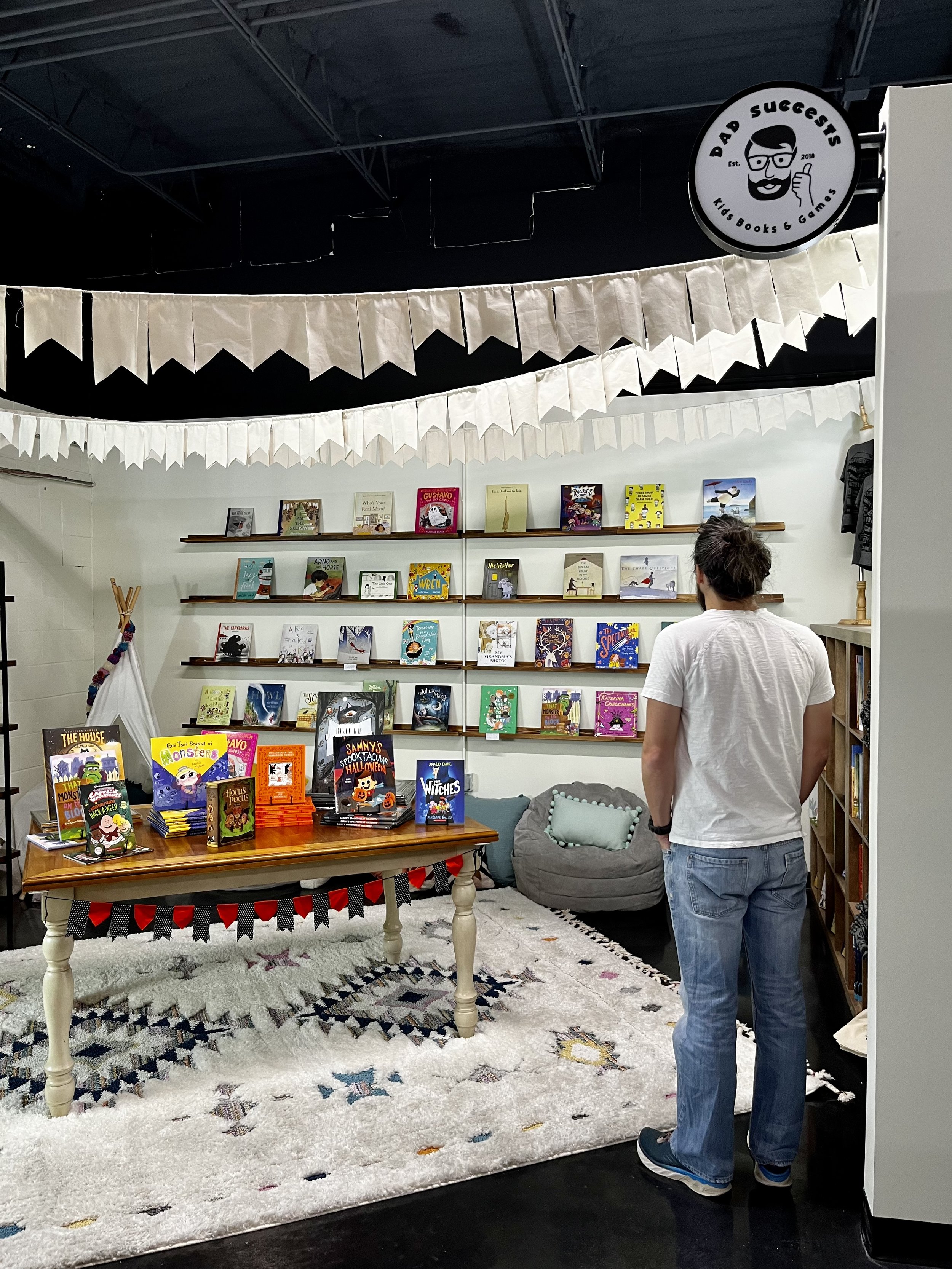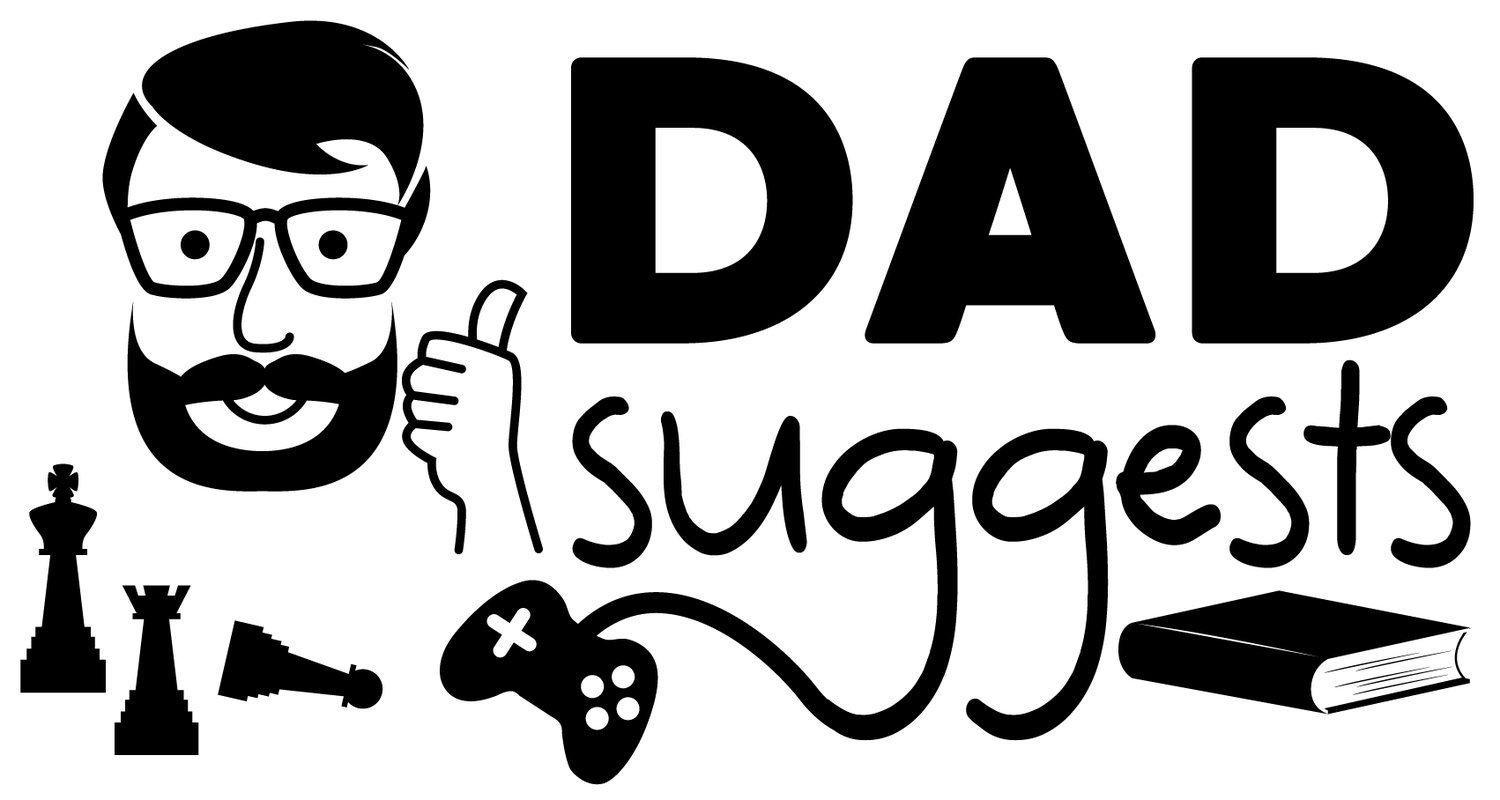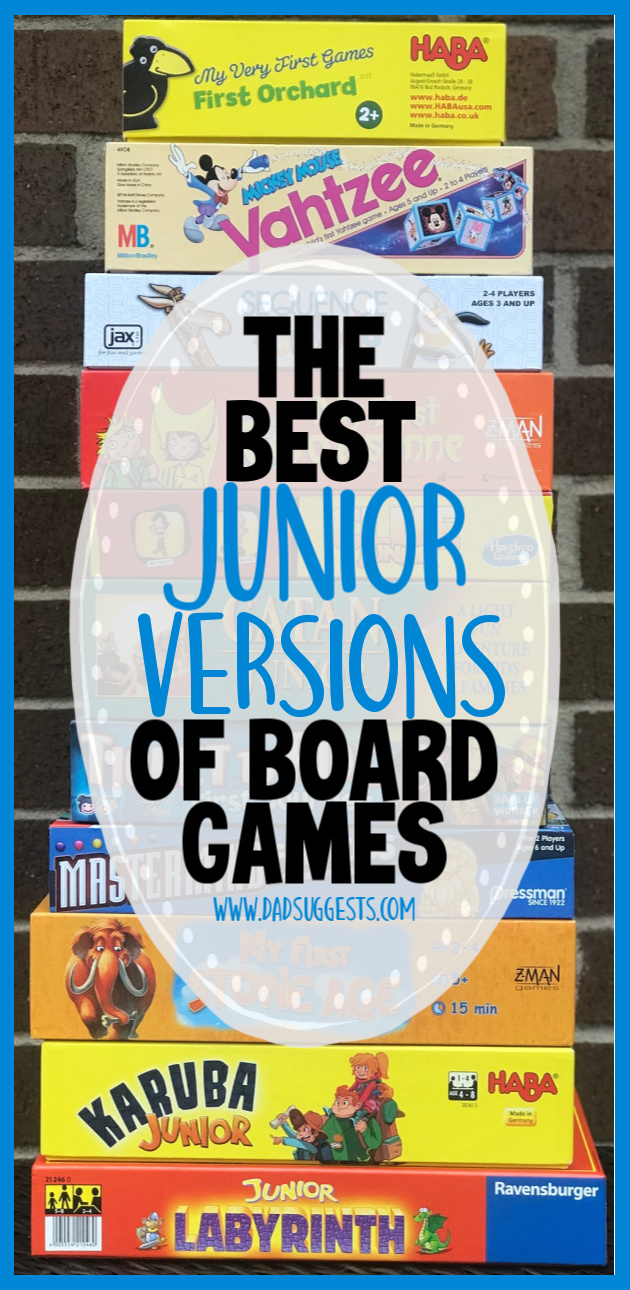The Top 10 Junior Versions of Board Games
As a father of kids ages 6 and 2, junior versions of board games are a trend I greatly appreciate. In case you’re unaware, junior versions of board games are basically simplified versions of their better-known adult versions. Whether they say “junior”, “for kids”, or “my first”, they all mean the same thing - better access to the fun for the young ones.
There is truly a very long list of benefits for these junior versions. First and foremost among them, in my opinion, is that they are often spinning off of a proven product with great pedigree. They take a very fun game that everybody loves and simplify the gameplay a little so younger people can play too. Genius, right?
And why is it so important that these games have great pedigree? Because Mom and Dad will have fun playing these games too. Gone are the days of brainless and monotonous kids games. And thank goodness. I couldn’t sit through an entire game of Trouble if you paid me to do it. We’re finally filling in that large gulf of space that used to exist between Candy Land and The Settlers of Catan.
That, of course, brings up the other benefits of these great kids games - they aren’t brainless. These games introduce children to strategy and planning without being overwhelming or inaccessible. They also do a wonderful job of taking into consideration a child’s attention span. Not that we aren’t trying to strengthen that skill, but we also need to be realistic. 5-year-old’s have a built-in timer.
Because this is a personal list of our favorite games, that means they can certainly all be played by our 6-year-old, and we even played many of them when he was only 4 or 5. A few of the games on this list can also be played independently by our 2-year-old, which is fantastic, and we’ll point out which games those are. And the greatest part of all is that my wife and I enjoy playing every single one of these games. I don’t foresee outgrowing them anytime soon, and there are certainly some I imagine we will play forever.
Disclosure: Some of the links in this article are affiliate links. These links will take you to view the game’s listing on Amazon.com.
Honorable Mention: Yahtzee Jr.
Published by Hasbro
I grew up with a game called Mickey Mouse Yahtzee, and my family has a lot of fun with it still to this day. Nowadays it’s called Yahtzee Jr., so Disney has a long history of making Disney-themed Yahtzee games, and they are all pretty much the same thing with different pictures. But that’s certainly not a bad thing. Just pick your favorite theme - princesses, Toy Story, Mickey, or even Pokemon.
It’s really a genius simplification of the game. Instead of all the various different kinds of things you score in Yahtzee, you’re just trying to roll as many of the same character as possible. You get 2 re-rolls just like the original. If you decide to go for Donalds, you’re trying to get 5 Donalds. If you only get 4 you place your Donald token on the 4. If someone already scored 4 Donalds you have to put it on the 3 spot. And next time you have to go for a different character because you can do each character only once.
The only problem is that many of these different versions are out of print, so make sure to check eBay if you have your eyes on a particular variation. But Yahtzee Jr. is a perfect example of preparing kids for the grown up version while still remaining fun enough for parents to enjoy as well.
10. Sequence for Kids
Published by Jax
Sequence for Kids is a game of connect 4 on a tabletop, where the things you are connecting are adorable pictures of animals - instead of plain old playing cards like the original Sequence.
In order to place one of your tokens on an animal, you must have that card in your hand. During your turn you play the card, place the token on the board, and draw a new card. The first player to get 4 in a row wins.
For added strategy there are also unicorns which are wild, and dragon cards that allow you to remove the token of an opponent.
This is actually a game that our 2-year-old can play too, albeit without much thought put into the strategy of getting 4 in a row. But she can absolutely draw a card, choose which animal she wants to play, find the animal on the board, and put her token on it. The strategy involved is pretty interesting too. Who’s going to waste their turn blocking the person who has 3 in a row? And of course the element of luck in drawing the cards keeps everything very balanced and unpredictable no matter your age.
9. Clue Junior
Published by Hasbro
Clue is a classic challenge of deduction and a fantastic game, but it’s certainly a bit much for a 5-year-old - hopefully for obvious reasons. Instead of solving a mystery of who murdered somebody with which weapon, how about we figure out who stole the cookies and what drink they had. That sounds better.
Hasbro has made several junior versions of games like Monopoly and Life, but Clue Junior is definitely our favorite. You still have elements of strategy and deduction, and you even still get to keep a secret clue sheet to record what you learn.
I think they made the right call in removing the cards that players hold and show each other. In the junior version, you can learn everything you need to know about the mystery on the game board. Players still need to organize their thoughts and decide which characters to move to find new information, and it’s definitely great preparation for the original when they’re old enough.
8. Mastermind for Kids
Published by Pressman
I’m a huge fan of Mastermind both as a parent and a teacher. This codebreaking game is just about as pure of a deduction game as you can have. If you can teach a kid to analyze their history of guesses and eliminate possibilities then you are absolutely learning very valuable skills.
In the original game there are 4 colorful pegs in the code, but Mastermind for Kids lowers that to 3. It also replaces the plain pegs with little animals. What’s not to like?
Obviously having a 3-piece code is more accessible for young kids, and we bought this one when our son was 4. Now that he’s 6 we’re using the classic version more often, but I think Mastermind for Kids is a good place to start for any beginning child under 8. You could also just cover up one of the rows of the original Mastermind if you own it already, but don’t underestimate the appeal of colorful little animals.
7. First Orchard
Designed by Anneliese Farkaschovsky, Illustrated by Jutta Neundorfer and Published by HABA
Here’s another game on this list that our 2-year-old can play, and an interesting addition to this list because the original Orchard was also a kids game. But First Orchard is specifically designed for even younger children, which is exactly why we bought it.
There’s no jigsaw puzzle and the fruit pieces are much larger and easier to grab (and not lose). We wanted a game that our daughter could independently play with us, and this one is perfect.
Children get to practice taking turns, rolling the die, and identifying their colors. There’s also a slight introduction to strategy, because it’s wise not to empty a tree entirely if you roll the basket and get to choose your fruit.
The game is definitely simplified to the point that a 2-year-old can participate, but I’m very happy to report that our 6-year-old enjoys playing it with his little sister. Perhaps the benefits of simplifying games to make them more accessible for kids is not lost on him. This junior game makes the list because we’ll have fond memories of it forever.
Check out our article on First Orchard to read more about why we love it.
6. My First Carcassonne
Designed by Marco Teubner, Illustrated by Rolf Vogt, and Published by Z-Man Games
I still hear lots of people call Carcassonne their favorite board game of all time, so it was most certainly deserving of its own junior version. After all, there was a guaranteed market of Carcassonne lovers who couldn’t wait to introduce the game to their kids.
The rules are greatly simplified in My First Carcassonne. And good thing too, because explaining the scoring system in regular Carcassonne to me was hard enough, let alone to a 5-year-old.
In My First Carcassonne, the only goal for winning is to get rid of your meeple first. And you get to place your meeple on the board when a road closes that has someone wearing your colors on it. On your turn, you simply flip over a tile and connect it to another tile on the board - which will either continue or close a road.
It’s an attractive little game with some great lessons in strategy for kids. How you orient your tiles can certainly make life more difficult for your opponents. It’s not uncommon for our 6-year-old to beat us in this one, which really makes it just as enjoyable for us adults to compete.
5. Junior Labyrinth
Designed by Max J. Kobbert, Illustrated by Joachim Krause, and Published by Ravensburger
We played the original Labyrinth and it blew me away with it’s innovative and cool design. I just knew I was going to absolutely love it. Every turn you slide in a maze piece and the entire labyrinth shifts. It’s really an incredible exercise in spatial awareness and planning. It’s truly a great game.
But, to be completely honest, it lasted just the tiniest bit too long for our 6-year-old, and the size of the board and the maze was a little overwhelming. Analyzing what changes would happen when you slide in a new maze piece was honestly challenging for my wife and I too. Of course that’s what makes this game so awesome, but it also explains why a junior version is a great idea.
Junior Labyrinth shrinks the board, and quite frankly that’s the only change it needs for younger kids. Other than that you can play it exactly the same way if you’d like. Only now it’s much easier for younger minds to analyze what happens when you slide in a new maze card, and whether or not it will allow you to reach your destination. My wife and I apparently could use the practice too.
4. My First Stone Age
Designed by Marco Teubner, Illustrated by Michael Menzel, and Published by Z-Man Games
The junior version of Stone Age is a blast. It’s a memory challenge first and foremost, with several nice strategical elements as well.
First of all, the presentation and the components are fantastic. The little wooden pieces of berries and fish and teeth are such wonderful additions. And as an added bonus, you even get a short entertaining history of the Stone Age to read aloud to your kids in the instruction booklet.
The winner of this game is the first to build 3 huts. In order to build a hut you must collect the correct resources, and in order to collect resources efficiently, you’re going to have to remember which tiles you should flip over on your turn.
This is definitely an example of a junior game that I have every reason to believe we could play forever. It’s a very good challenge and a very attractive game, with a perfect balance of skill and luck.
3. Karuba Junior
Designed by Rüdiger Dorn & Tim Rogasch, Illustrated by Studio Vieleck and Published by HABA
Karuba Junior is another game on this list that our 2-year-old can play completely independently with us, and another game that our 6-year-old loves too. That’s pretty sweet range, and I certainly can’t argue with those credentials.
Perhaps the main difference from Karuba is that Karuba Junior is now a cooperative game where you are searching for treasure. One by one you flip over tiles. If you get a path card you add it to a path. If you get a tiger it must block a path. If you get a pirate ship the enemy pirates move closer to the beach. And if you get a treasure chest you are 1/3 of the way to victory.
Once again there is a good mix of luck and strategy for kids here. When we first played we blocked off all of our paths and couldn’t win because there were no more spots to place treasure chests. And even after learning that lesson there is a good balance between winning and losing from the pirates that keeps us coming back for more.
And this is another great game from HABA, so you know the components are going to be fantastic. The art and the wooden characters - and especially the pirate ship - truly add a lot of enjoyment to the experience. If involving the youngest siblings in your family is your main goal, then this game would be number one.
2. Ticket to Ride First Journey
Designed by Alan R. Moon, Illustrated by Djib, and Published by Days of Wonder
Ticket to Ride First Journey is my wife’s favorite game on this list, and it’s a very close second overall. We love playing the original Ticket to Ride (although it’s another one my wife routinely beats me in) and it makes for a wonderful junior adaptation.
Ticket to Ride First Journey is still a game about using your train pieces to complete routes across the country. To simplify the game for a younger audience, the most obvious difference is that the map is smaller. It’s much easier for children to find the path they are trying to complete.
A smaller map isn’t the only help provided to kids, however, because every city also has a large picture to accompany it. For instance, there’s a beaver in Montreal, and the Statue of Liberty in New York City - and the pictures can be found on your secret route cards as well. This of course is very helpful as a kid is looking down at their card and back to the map trying to figure out where they need to build.
The actions you can take on your turn are simplified as well. You can still build or draw new train cards, but you can only draw a new secret route card after you complete one and announce it to everybody. And, most importantly, winning the game is very easy to explain. Instead of lots of ways to score points and all of the adding involved in the original, the winner is simply the first person to finish 6 tickets. This classic game was truly perfectly adapted for young players.
1. Catan Junior
Designed by Klaus Teubner, Illustrated by Patrica Raubo, and Published by Mayfair Games
Out of all the games on this list, Catan Junior is certainly the most challenging, and the most likely to be played forever. It also contains the most components and has the most rules to remember. But, having said all that, we were still able to start playing it when our son was only 4.
At that time we had to help him realize when he had enough resources to buy a ship or a castle, but now he’s playing it completely independently.
Catan Junior requires focus to make sure you get all your resources from the bank each turn, and creativity in trading to get the resources you need to build.
Similar to Catan, there is more than one strategy to pursue, but winning is quite simple - be the first one to build all of your pirate castles. And other than trading, there are really only 3 things to do - build a ship, build a castle, or buy a parrot card. Our son particularly likes to spend his resources on parrot cards, which give you random rewards. He must know better than me, because I’ve literally never won this game.
Catan Junior is definitely a perfect example of what junior games can provide to their audience. They simplified the rules and goals just enough to make it completely accessible to young children, but it still provides a very challenging and stimulating introduction to things like strategy and managing your resources. And that’s what makes it our king of the junior board games.
For more board game ideas for kids, make sure to check out our list of the top 5 cooperative games for 5-year-olds and the best logic games for kids.
Does your family own any of these junior versions? Do you like playing them as much as we do? Did we miss any of your favorites? Let us know in the comments!



















